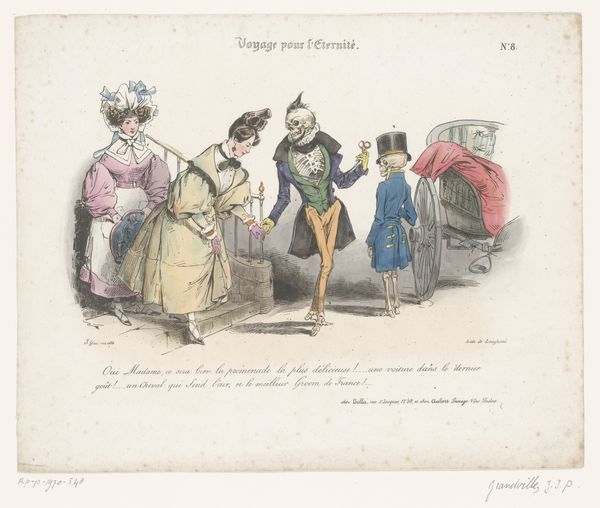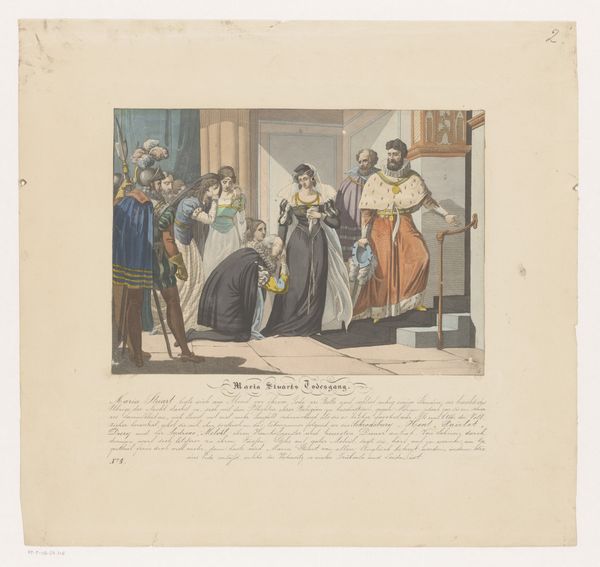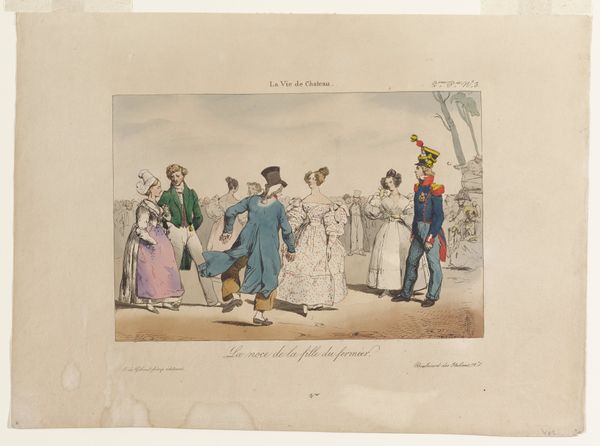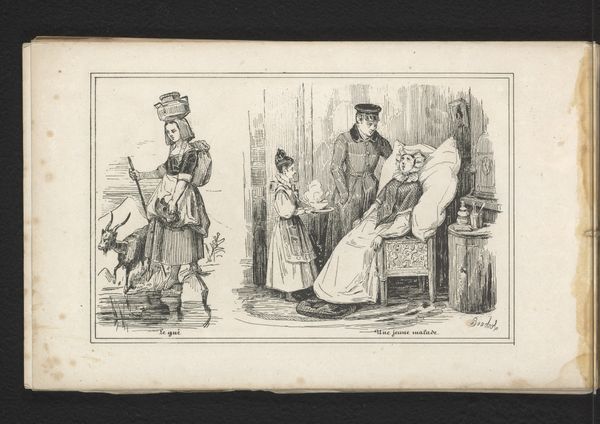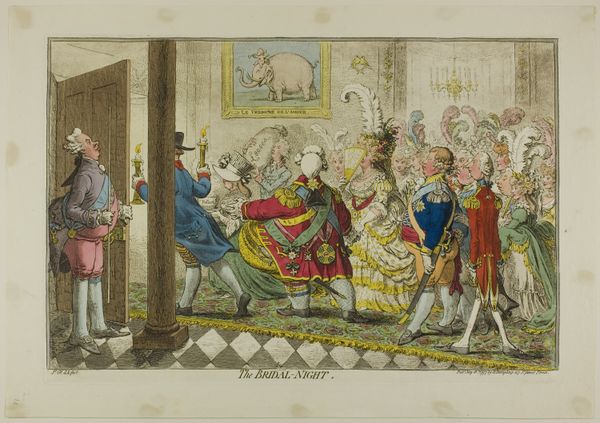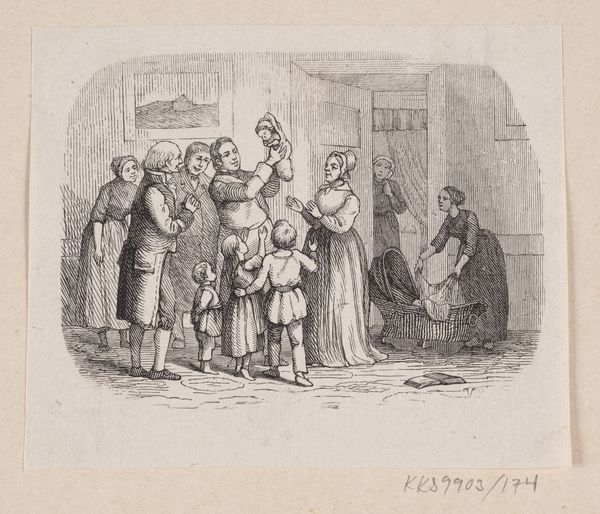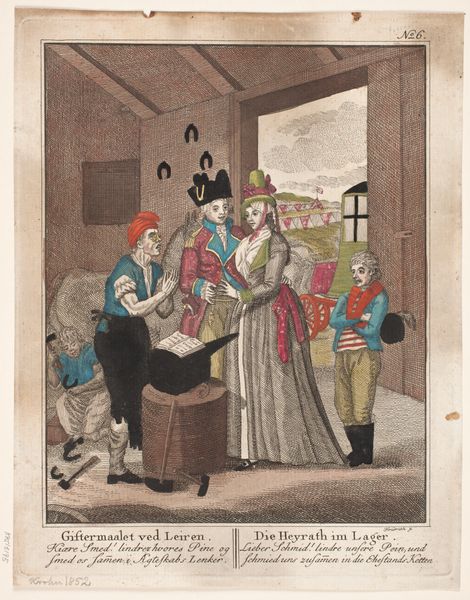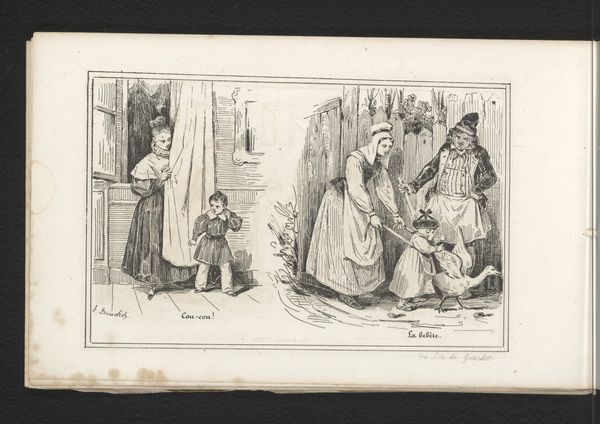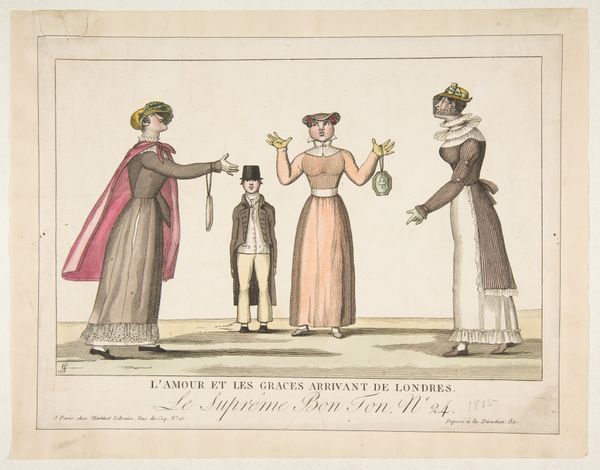
drawing, coloured-pencil, print
#
drawing
#
coloured-pencil
#
allegory
# print
#
caricature
#
coloured pencil
#
romanticism
#
men
#
genre-painting
Dimensions: Sheet: 10 1/16 × 13 7/16 in. (25.6 × 34.1 cm)
Copyright: Public Domain
Curator: This intriguing print, titled "Journey for Eternity, No. 1," was conceived between 1834 and 1844 by J. J. Grandville, and employs coloured pencil techniques. Editor: What strikes me is its playful yet macabre tone. Death, dressed impeccably, offers his arm to these ladies, like a twisted courting scene. Curator: Exactly, the dandy-esque portrayal of Death speaks volumes. It’s a commentary on social mores, the relentless march of time, and the bourgeois obsession with appearance, even in the face of mortality. Consider the Romantic era’s fixation with death alongside social hierarchies. Editor: The scissors are a powerful symbol too, presented on his skeletal hand, the suggestion of cutting the thread of life – a visual reminder of the brevity of human existence. It contrasts the detailed costumes and finery; even the carriage has seen better days, all indicating an imminent end, though elegant! Curator: Absolutely, and the juxtaposition is key. Grandville critiques societal vanity. Look at the carriage, seemingly dilapidated, symbolizing the inevitable decay that awaits everyone, regardless of social status. Editor: Is that a skeleton groom next to him? With his blue uniform? It seems even the assistants have joined this macabre scene. Curator: Precisely. Grandville also used caricature heavily to create these exaggerated forms. The sickly green tint in their faces further exaggerates the impending doom, I’d suggest. These were popular, mass-produced prints in their day. It invites its viewers to confront uncomfortable truths with satire. The colored pencil work only enhances the almost grotesque allure. Editor: This work creates tension. It's fascinating how the imagery of death and high society are blended. You realize this is about social structures, and how none are excused from death. Curator: Indeed. "Journey for Eternity, No. 1," reminds us that our social performance eventually meets its ultimate audience with inevitable consequence. Editor: An image rich in cultural symbols; it certainly invites consideration of death’s presence through both individual and collective lenses.
Comments
No comments
Be the first to comment and join the conversation on the ultimate creative platform.
